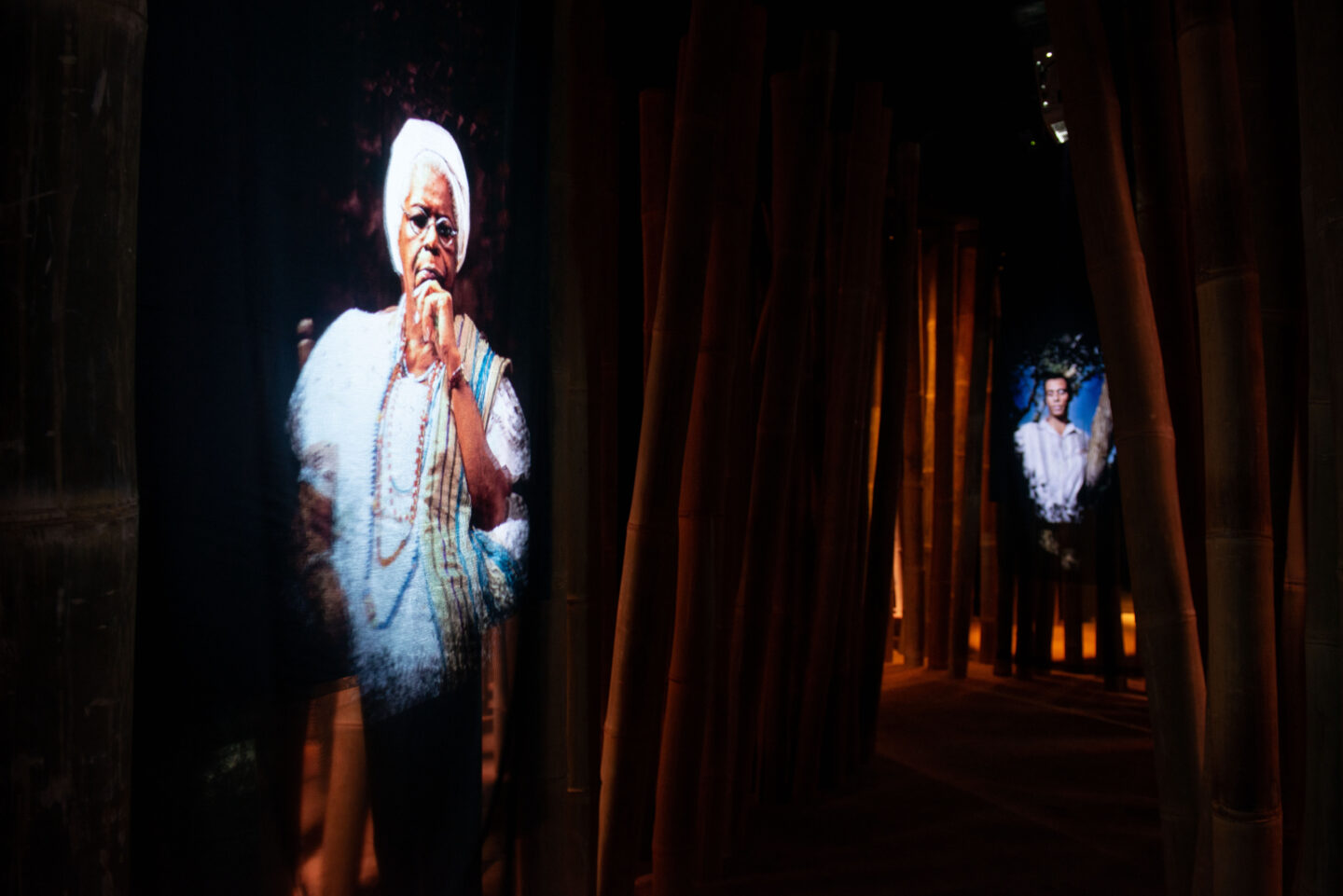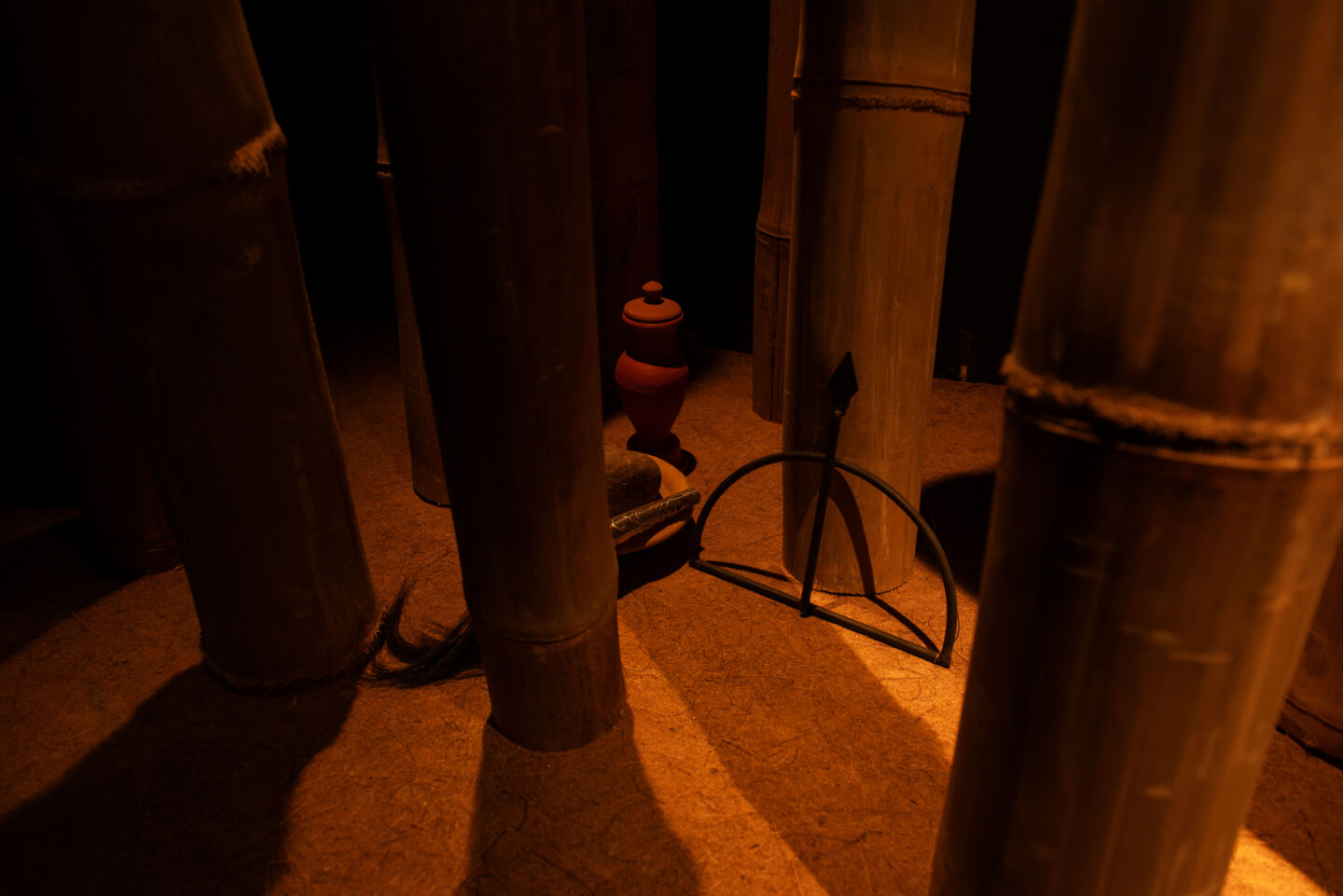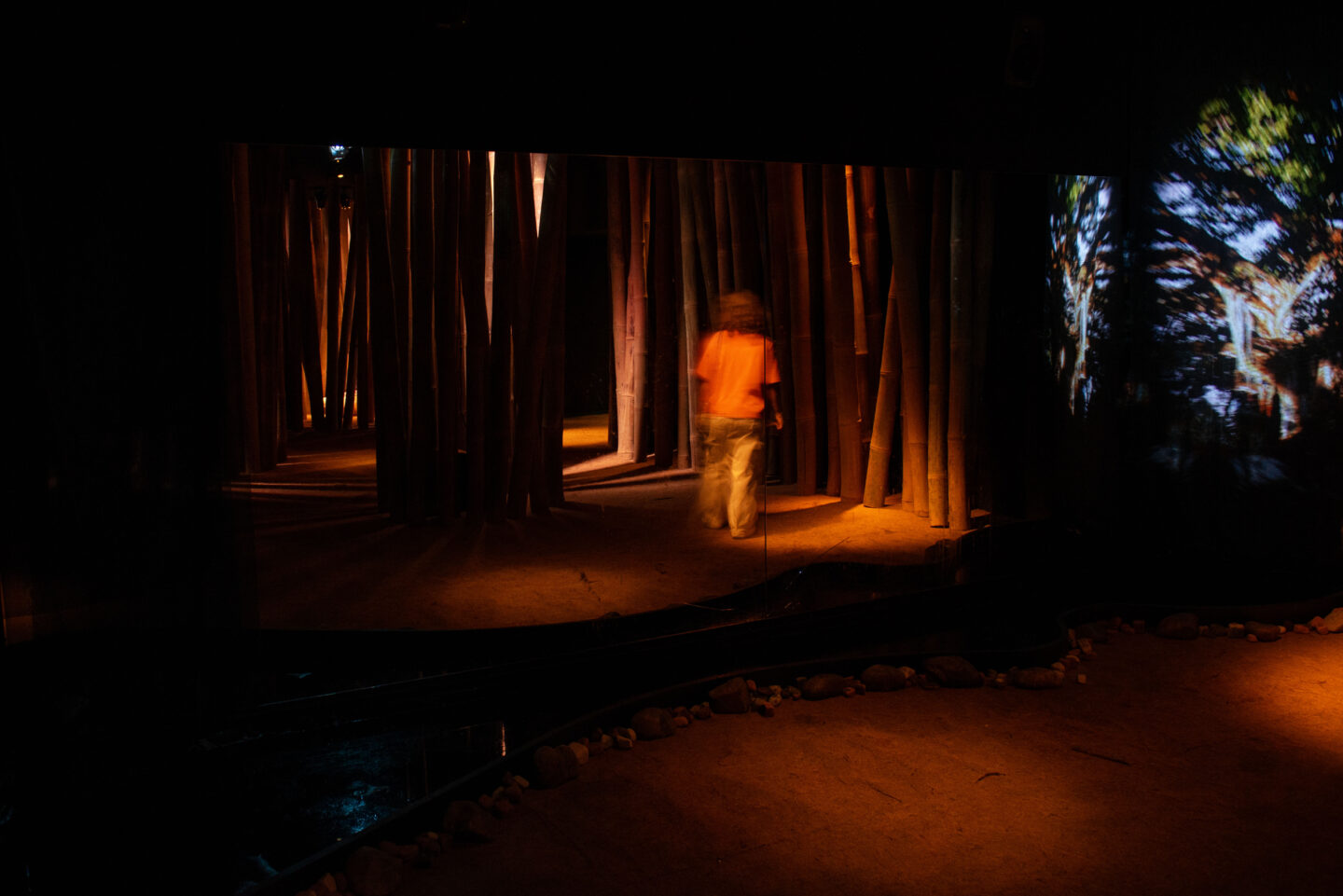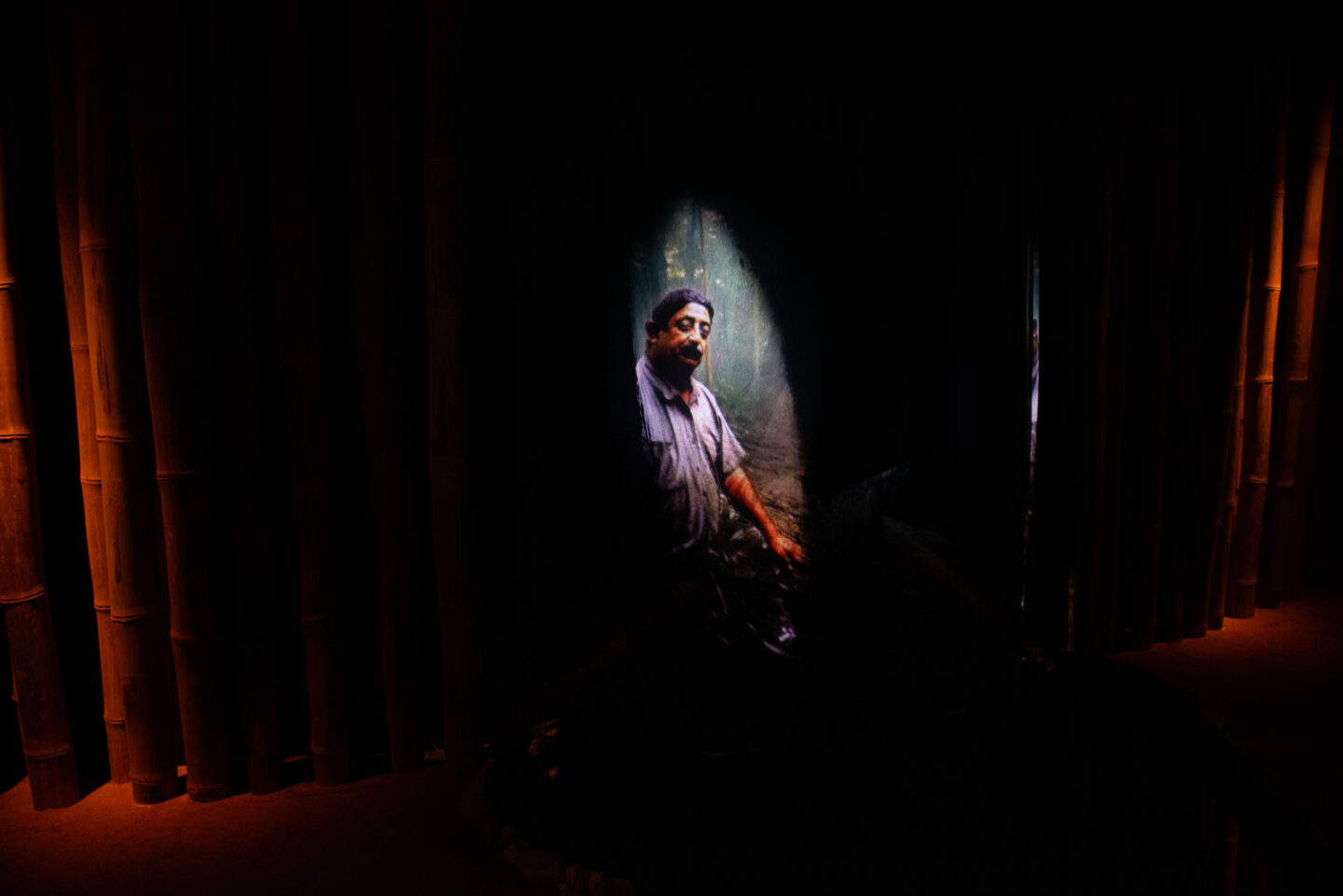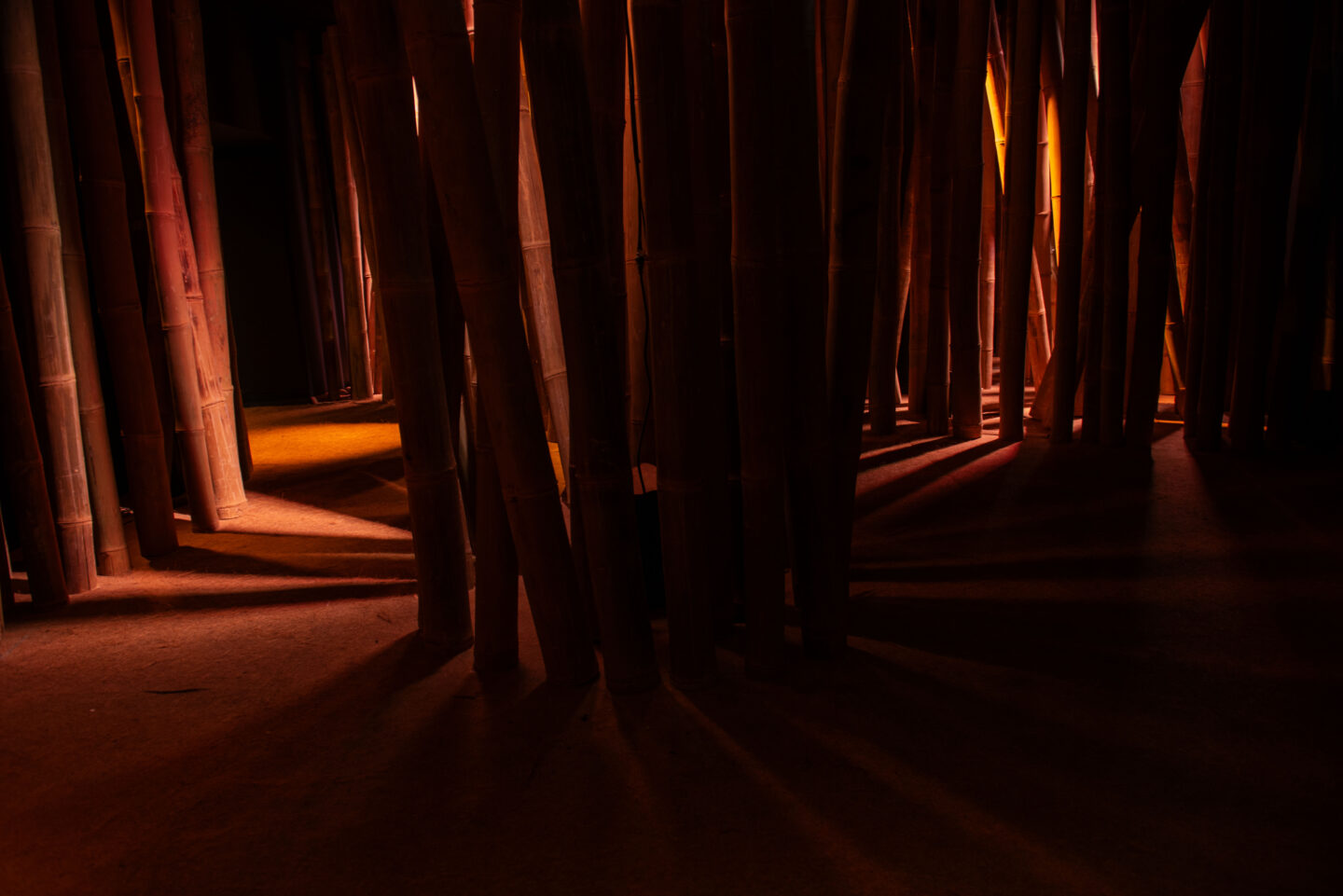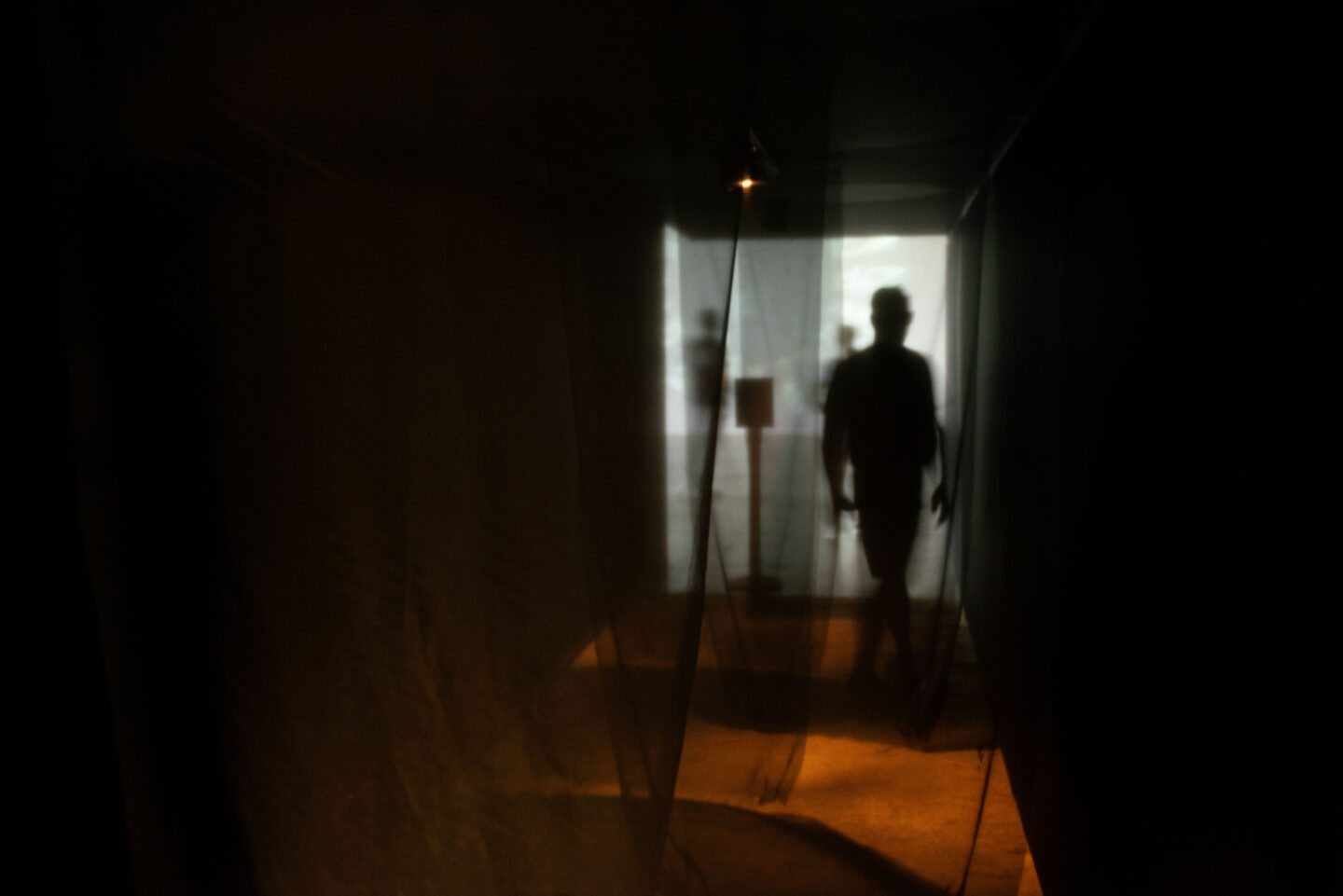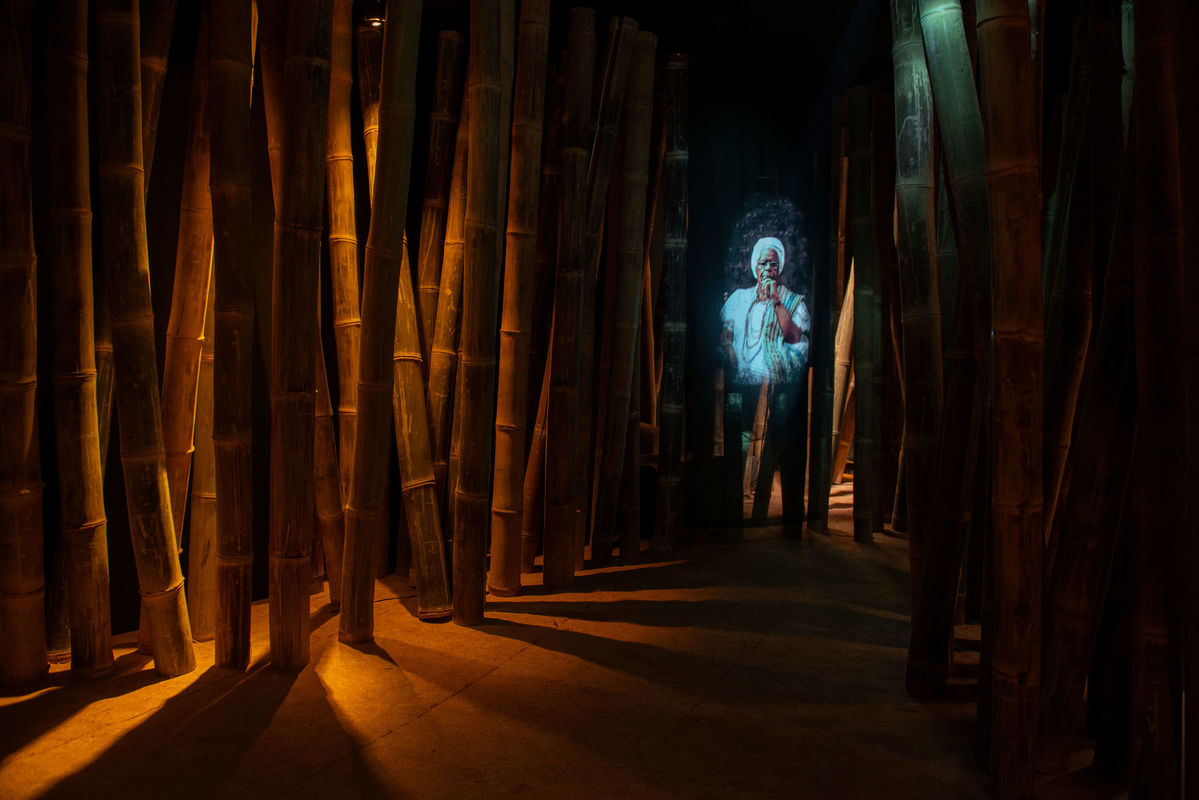
Ayrson Heráclito & Tiganá Santana
Agô! Permission is asked to enter the sacred forest.
Populated by material lives, inanimate lives, or lives that have become ancestral, within it dwell various energies, which together form a forest of infinities.
Under the ever alert protection of caboclos, encantados, Oxóssi, and Mutalambô, Ayrson Heráclito and Tiganá Santana, eyes that never sleep, fulfill a dream: a tribute to the forest, an offering to the forces of nature, praising the energy stored among plants and trees that make the existence of humanity possible.
From the projections that reflect multiple images, producing sounds and sensations that emerge in a cold and colorful forest, spring rivers, birds, and crumpled leaves on which we walk. Flowers, tree frogs, insects, and other extinct biomes coexist with native ancestors, caboclos, Chico Mendes, Bruno and Dom, and mother Stella de Oxóssi. When this forest cries the pain of violence, colonialism, and destruction, it is Oyá, now guardian of all these Eguns, mother of all that was once alive, who invites you to dance joyfully and celebrate life that is preserved and renewed in nature.
The forest of infinities, installed in the center of the largest city in Latin America, is a feat of art, the fruit of a hunter’s courage. It is an impossible story materialized in the name of a political project that defends life and the preservation of nature, and which proposes a radical break with ignorance and extermination.
Agô, it is time to leave the forest. Let the forest return to its mysterious silence, with its encantados, rivers, and infinite life forms. With humans absent, bamboo trees sway again, signaling the restoration of balance. Invisible beings merge into a single vital power and are free again at dusk in the forests of Oxóssi and Mutalambô. Regarding the human visit, they ask themselves: will they learn that all life is sacred?
Agô.
The blessing.
Olorum Modupé.
luciana brito
translated from Portuguese by philip somervell
Ayrson Heráclito (Macaúbas, BA, Brazil, 1968. Lives between Cachoeira and Salvador, BA, Brazil) is a visual artist, researcher, curator, and professor. His works have been presented in solo and group exhibitions, both nationally and internationally, including the III Bienal do Mercosul (Porto Alegre, RS, Brazil), II Trienal de Luanda (Angola), and are part of collections of institutions such as the Museum der Weltkulturen (Frankfurt, Germany) and the Museu de Arte Moderna da Bahia (Salvador, Brazil).
Tiganá Santana (Salvador, BA, Brazil, 1982. Lives in Salvador) is a composer, singer, curator, poet, multiartist, translator and professor of Arts at Universidade Federal da Bahia. Initiated in Candomblé as Taata Kambondo, he has released many albums, sound and multimedia works, being the first composer to present an album in African languages in Brazil, as well as being equally recognized by his research in Bantu studies.
- Vista da obra Floresta de infinitos, de Ayrson Heráclito e Tiganá Santana durante a 35ª Bienal de São Paulo – coreografias do impossível © Levi Fanan / Fundação Bienal de São Paulo
- Vista da obra Floresta de infinitos, de Ayrson Heráclito e Tiganá Santana durante a 35ª Bienal de São Paulo – coreografias do impossível © Levi Fanan / Fundação Bienal de São Paulo
- Vista da obra Floresta de infinitos, de Ayrson Heráclito e Tiganá Santana durante a 35ª Bienal de São Paulo – coreografias do impossível © Levi Fanan / Fundação Bienal de São Paulo
- Vista da obra Floresta de infinitos, de Ayrson Heráclito e Tiganá Santana durante a 35ª Bienal de São Paulo – coreografias do impossível © Levi Fanan / Fundação Bienal de São Paulo
- Obra Floresta de Infinitos de Ayrson Heráclito e Tiganá Santana durante a 35a Bienal de São Paulo. 10/10/2023 © Levi Fanan / Fundação Bienal de São Paulo
- Vista da obra Floresta de infinitos, de Ayrson Heráclito e Tiganá Santana durante a 35ª Bienal de São Paulo – coreografias do impossível © Levi Fanan / Fundação Bienal de São Paulo
- Vista da obra Floresta de infinitos, de Ayrson Heráclito e Tiganá Santana durante a 35ª Bienal de São Paulo – coreografias do impossível © Levi Fanan / Fundação Bienal de São Paulo

 Português
Português